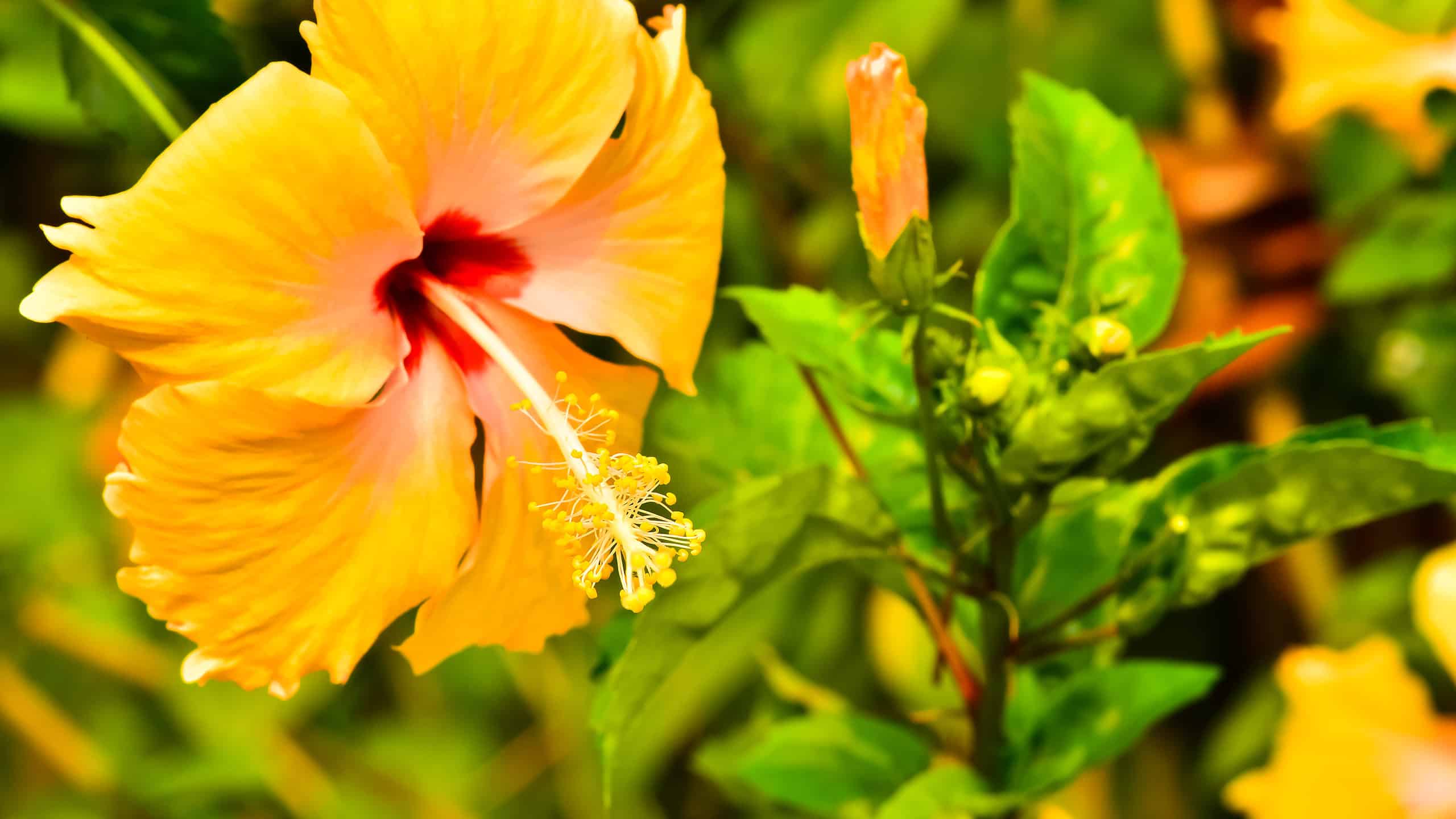Hello, flower enthusiasts! If you’re lucky enough to be a Floridian or just looking to flex your green thumb in the Sunshine State, this is the guide for you. The lush climate of Florida offers a floral fiesta, teeming with a riot of colors, scents, and styles that can make your garden a bona fide paradise. This article will navigate you through an array of blooms that not only survive but thrive in Florida’s steamy subtropical vibe. From the classic hibiscus to the exotic Birds of Paradise, we’ll delve into what it takes to help the best flowers in Florida flourish under the Floridian sun.
1. Hibiscus
Hibiscus blooms are colorful botanical marvels that are renowned for their striking look. These flowers come in a variety of hues, including blazing reds, vivid oranges, delicate pinks, and immaculate whites. Their petals have exquisite forms that delicately unfurl and are soft and delicate.
Early spring or late fall are the finest times to grow hibiscus in Florida if you’re interested in doing so. This enables the blooms to take advantage of Florida’s dappled sunshine and infrequent rains while also developing sturdy roots in the rich soil.
Hibiscus blooms often begin to bloom in Florida in the late spring and persist through the hot summer. Anyone who sees them is captivated by the brilliant color they bring to the scene. Florida is the perfect place for these lovely blooms since their blossoming time corresponds with the state’s sunny days.
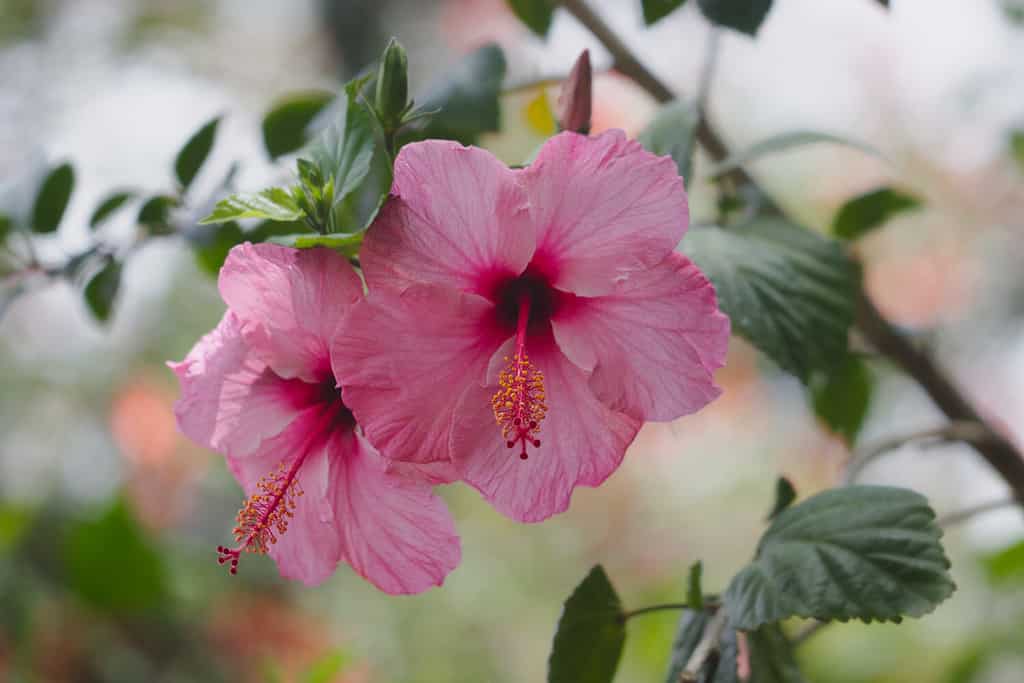
Hibiscus flowers are known for their super-tropical look and resilience to heat.
©Cadurn/Shutterstock.com
2. Bougainvillea
Bougainvillea flowers are striking flowers, known for their eye-catching beauty. These exquisite blooms, native to tropical regions, grace the Floridian landscape with their vibrant presence, thriving under the abundant Florida sunshine.
With a profusion of colors, Bougainvillea flowers are a feast for the eyes. Their delicate petals, actually modified leaves called bracts, come in a dazzling array of shades, ranging from brilliant purples and pinks to fiery oranges and reds. These bracts enfold the small, inconspicuous flowers, creating a captivating and intricate display.
For optimal growth, it is recommended to plant Bougainvillea in Florida during the warm months of late spring or early summer. This allows the plants to establish their roots in the fertile soil, taking advantage of the ample sunlight and favorable weather conditions that Florida provides.
In Florida, Bougainvillea flowers burst into full bloom during the scorching summer months, when the days are long and the temperatures are high. They transform the landscape with their vibrant splendor, adorning walls, fences, and trellises with cascades of colorful bracts. Their blooming period often extends into the autumn season, creating a prolonged showcase of beauty that enhances the Floridian scenery.

Bougainvillea are excellent pollinator-attracting flowers that are perfect for a
butterfly
garden.
©SL_Art/Shutterstock.com
3. Plumeria
Plumeria flowers are true botanical wonders, admired for their enchanting beauty. These exquisite blooms, native to tropical regions, add a touch of allure to the Floridian landscape, thriving under the abundant sunshine of the Sunshine State.
With their delicate charm, plumeria flowers present a captivating sight. They boast clusters of fragrant blossoms, each consisting of five velvety petals, forming a star-like shape. These petals come in an array of enchanting colors, including pure whites, soft pinks, sunny yellows, and vibrant oranges. Some varieties even exhibit a mesmerizing blend of hues.
To cultivate plumeria in Florida, it is best to plant them during the warm months of spring or early summer, once the risk of frost has passed. This timing allows the flowers to establish strong roots in the fertile soil, benefiting from the longer daylight hours and the gentle warmth of the Florida climate.
In Florida, plumeria flowers typically bloom during the summer months, spreading their delightful fragrance throughout the air. Their blossoming period often extends into the early autumn, creating a prolonged display of their beauty. These blossoms thrive in the sun-drenched environment, showcasing their vibrant colors and delicate petals to mesmerize all who behold them.

Plumerias have a distinctively tropical look, as do many of the other flowers on our list.
©iStock.com/tumsubin
4. Milkweed
Beautiful milkweed blooms are famous for their distinctive beauty and ecological importance. They are interesting botanical marvels. These amazing flowers, which are native to Florida and other places, provide a special touch to the natural environment while providing a crucial home for pollinators like butterflies.
A cluster of tiny, star-shaped blossoms with five delicate petals, known as milkweed flowers, are seen on this plant. These petals come in a variety of colors, such as milky white, gentle purple, and delicate pink. Their cores are decorated with intricate patterns that draw pollinators in with their appealing patterns.
It is recommended to grow milkweed in Florida during the first few months of spring when the soil starts to warm up. This guarantees that the plants will have enough time to put down roots before the summer heat arrives. Just as well, milkweed seeds may be sown in the fall, when they will sprout throughout the winter and flourish in the spring.
In Florida, milkweed flowers bloom from mid- to late summer, when they are at their height. They attract a variety of species that depend on milkweed as a vital supply of nectar and a host plant for their eggs at the time of year when butterflies are most active when they are in full bloom. They sustain the ecosystem’s delicate equilibrium and offer a touch of natural beauty.
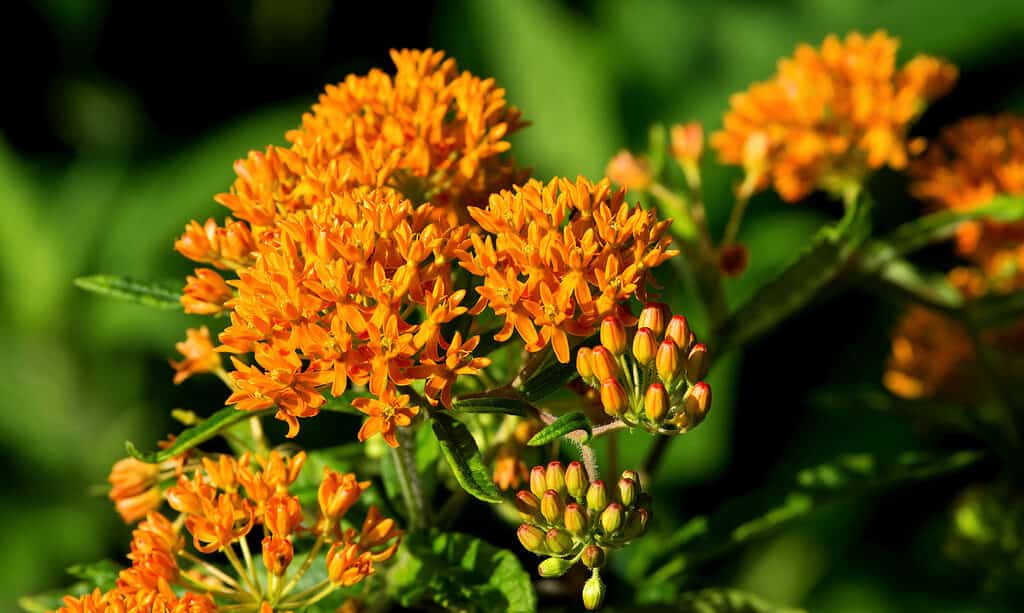
Milkweed is a vital source of food for butterflies and their caterpillars, making them an excellent addition to any butterfly or pollinator garden in Florida.
©iStock.com/McKinneMike
5. Firebush
Firebush flowers are fascinating plants that lend a fiery charm to the Floridian landscape. These vibrant blooms, native to Florida and other tropical regions, thrive under the scorching Florida sun, casting their enchanting spell upon the surroundings.
With their dazzling appearance, firebush flowers command attention. They bear slender tubular blossoms that form clusters, showcasing a striking combination of vibrant reds, fiery oranges, and brilliant yellows. These radiant hues serve as a beacon, attracting hummingbirds and butterflies to their abundant nectar.
For optimal growth, it is recommended to plant firebush in Florida during the warm months of spring or early summer. This allows the plants to establish their roots in the well-drained soil and bask in the ample sunshine and tropical climate that Florida offers.
In Florida, firebush flowers burst into full bloom during the summer months, adorning the landscape with their resplendent colors. Their blooming period extends into the autumn, ensuring a prolonged display of their enchanting beauty. These blossoms thrive under the intense heat, creating a vibrant oasis for pollinators and adding a touch of tropical splendor to the Floridian scenery.

The firebush is an eye-catching plant that’s native to Mexico, Central America, and South America; however, it does grow well in hotter and dryer parts of Florida.
©Jens Otte/Shutterstock.com
6. Periwinkle
Periwinkle flowers are captivating botanical treasures that grace the Floridian landscape with their delicate beauty. These charming blooms, native to Florida and other warm regions, flourish under the gentle embrace of the Florida sun, imparting a touch of enchantment to the surroundings.
With their dainty allure, periwinkle flowers delight the beholder. They boast five-petaled blossoms, resembling tiny stars, in shades of soft lavender, pale pink, and pristine white. These petite flowers cluster together, forming a carpet of subtle elegance that sweeps across gardens and borders.
For optimal growth, it is advisable to plant periwinkle in Florida during the mild months of spring or fall when the temperature is moderate. This allows the plants to establish their roots in the well-drained soil, benefiting from the pleasant climate and ensuring healthy development.
In Florida, periwinkle flowers bloom throughout the warmer months, gracing the landscape with their delicate presence. Their blossoming period often begins in spring and extends into the summer, offering a prolonged showcase of their understated beauty. These blooms thrive under the balmy Florida weather, spreading their charm and adding a serene touch to the Floridian scenery.

Periwinkle flowers may seem quite delicate, but they can handle the harsh heat and humidity of Florida with ease.
©Dewi Cahyaningrum/Shutterstock.com
7. Bird of Paradise
Bird of Paradise flowers are extraordinary botanical wonders that bring a touch of exotic beauty to the Floridian landscape. These magnificent blooms, native to tropical regions, thrive under the warm Florida sun, gracing the surroundings with their striking presence.
With their lovely appearance, Bird of Paradise flowers are truly remarkable. They possess large, distinctive blooms that resemble the vibrant plumes of a tropical bird in flight. These blossoms exhibit a mesmerizing blend of colors, including deep oranges, intense blues, and vibrant purples. Their intricate shape and unique form make them instantly recognizable.
For the best possible growth in Florida, it is recommended to plant Bird of Paradise during the spring or early summer when the soil is warm and the frost has subsided. This allows the plants to establish their roots in the fertile soil, taking advantage of the longer daylight hours and favorable weather conditions.
In Florida, Bird of Paradise flowers typically bloom during the summer months, adorning the landscape with their striking hues. Their blossoming period often extends into the fall, ensuring a prolonged showcase of their exotic beauty. These blooms thrive in the tropical climate, creating a captivating display that complements the Floridian scenery.
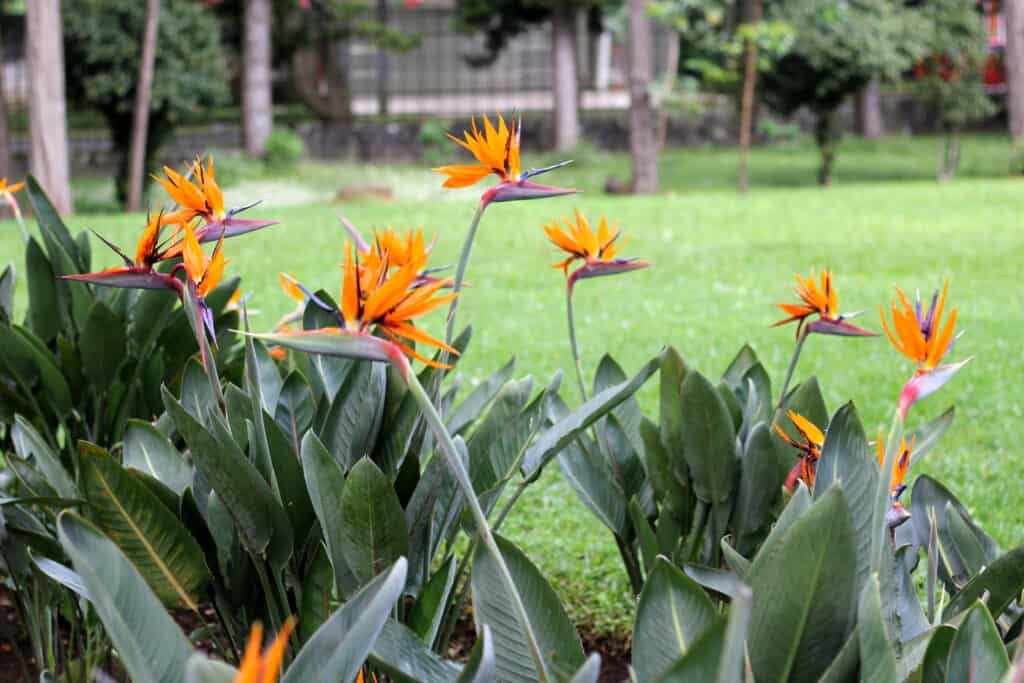
Bird of Paradise plants have an extremely unusual, bird-like look that is very eye-catching.
©iStock.com/Arlette Lopez
8. Lantana
Lantana flowers are fascinating botanicals that grace the Floridian landscape with their vibrant beauty. These charming blooms, native to Florida and other warm regions, thrive under the generous Florida sun, infusing the surroundings with a burst of color.
With their great allure, lantana flowers are a sight to behold. They showcase clusters of tiny, tubular blossoms that form rounded flower heads, resembling vibrant fireworks frozen in time. Their petals come in a delightful palette of colors, including sunny yellows, fiery oranges, rich purples, and passionate pinks. Some varieties even exhibit multicolored flowers, blending shades in a lovely display.
To cultivate lantana in Florida, it is advisable to plant them during the warmer months of spring or early summer. This timing allows the plants to establish their roots in the well-drained soil and take advantage of the ample sunlight and favorable climate that Florida provides.
In Florida, lantana flowers bloom profusely from spring through the summer, adorning the landscape with their vibrant hues. Their blooming period extends into the fall, ensuring a prolonged showcase of their radiant beauty. These blossoms thrive under the warm Florida weather, attracting butterflies and other pollinators with their abundant nectar and creating a vibrant tapestry of color.
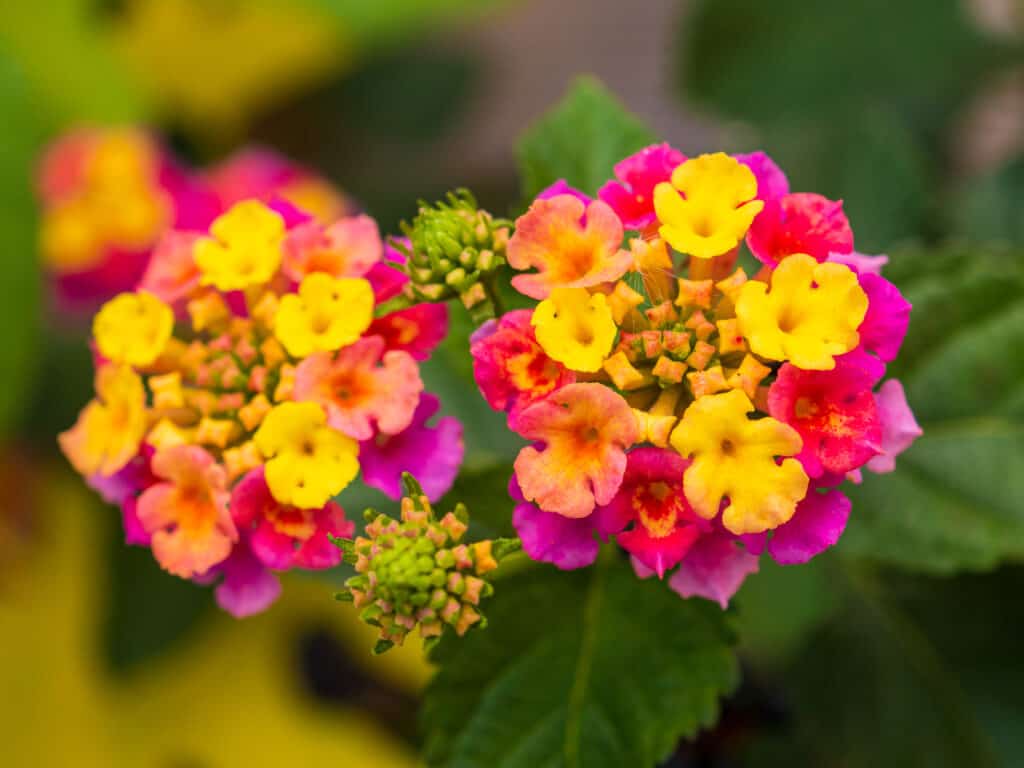
Lantana flowers have colorful blooms that come in many different colors, some of which can be found on the same plant!
©galitsin/Shutterstock.com
9. Pentas
Pentas flowers are quite lovely flowers that grace the Floridian landscape with their vibrant and charming presence. These delightful blooms, native to warm regions including Florida, thrive under the nurturing embrace of the Florida sun. They adorn gardens and landscapes with their colorful splendor.
Pentas flowers are small, star-shaped blossoms that grow in compact clusters. Each flower boasts five delicate petals that form a radiant burst of color. The petals come in a variety of hues, including shades of pink, red, lavender, and white, creating a great show of nature’s palette.
For optimal growth in Florida, it is recommended to plant pentas during the warm months of spring or early summer. This timing allows the plants to establish strong roots in the well-drained soil and take advantage of the longer daylight hours and favorable weather conditions that Florida offers.
Pentas flowers bloom prolifically from spring through the summer in Florida, adding a vibrant touch to the landscape. Their blooming period often extends into the fall, ensuring a continuous showcase of their beauty. These blossoms thrive under the sun-drenched Florida climate, attracting butterflies and hummingbirds with their abundant nectar and infusing the surroundings with their cheerful presence.
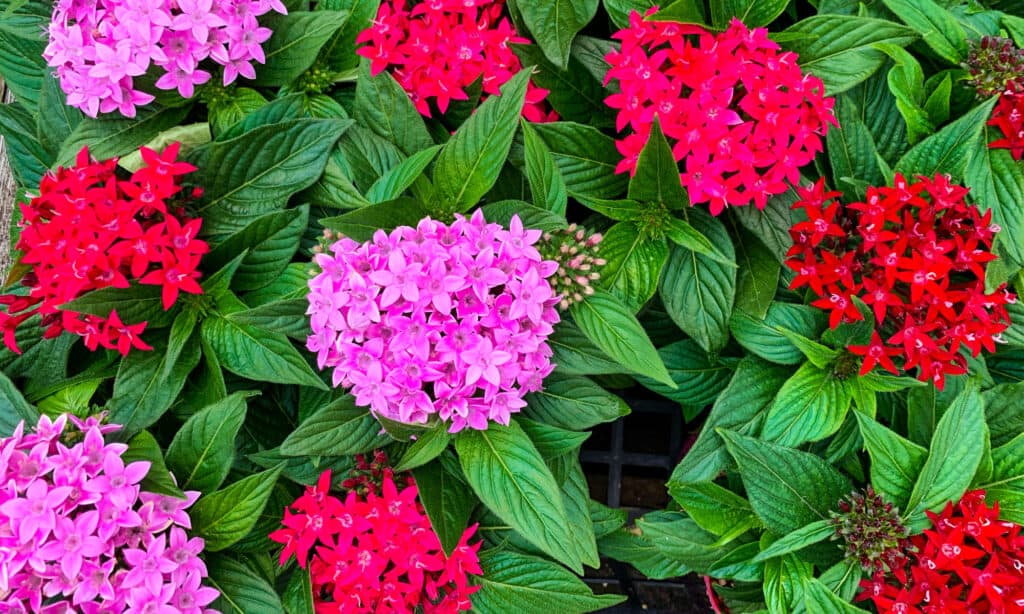
Pentas are a great spring-blooming flower to consider planting nearly anywhere in Florida.
©Nokzd/Shutterstock.com
10. Gaillardia
Gaillardia flowers are unique and charming blooms, native to Florida and other warm regions. They thrive under the gentle Florida sun, adding a burst of color to the surroundings.
With their eye-catching appearance, gaillardia flowers are a sight to behold. They boast daisy-like blooms with striking colors and intricate patterns. The petals showcase a mesmerizing blend of hues, ranging from fiery oranges and vibrant yellows to deep reds and rich maroons. The contrasting patterns, often resembling intricate mosaics, add to their visual appeal.
For optimal growth in Florida, it is recommended to plant gaillardia during the warm months of spring or early summer. This timing allows the plants to establish their roots in the well-drained soil. Thus, benefiting from the longer daylight hours and favorable weather conditions that Florida offers.
In Florida, gaillardia flowers bloom profusely during the summer months, spreading their vibrant colors across the landscape. Their blossoming period often extends into the fall, ensuring a prolonged showcase of their radiant beauty. These blooms thrive under the sunny Florida climate. They attract butterflies and bees with their abundant nectar and create a lively tapestry of color.
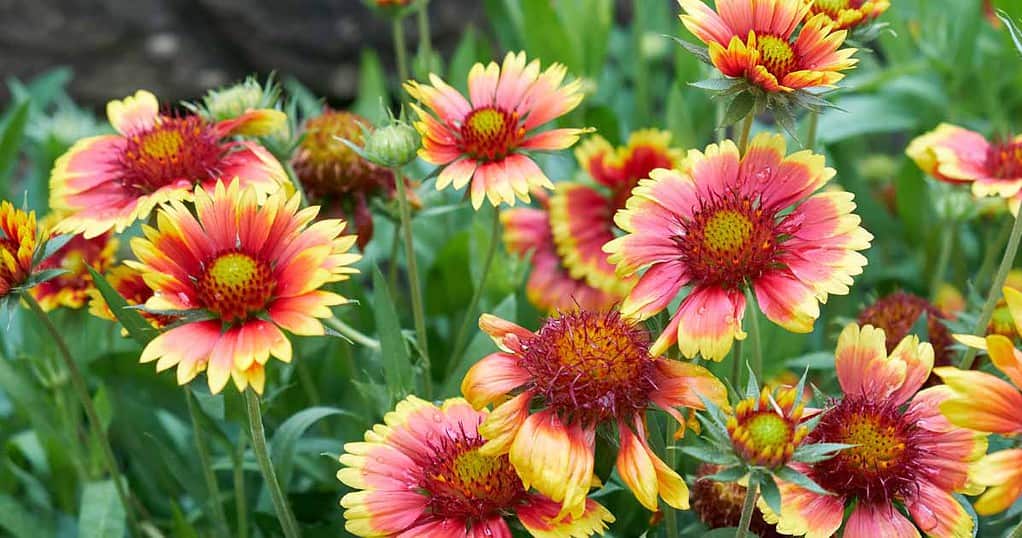
Gaillardia flowers are great pollinator-attracting flowers that can handle the harsh Floridan heat.
©iStock.com/Iseo Yang
Summary of the Best Flowers to Plant in Florida: 10 Flowers That Love the Heat
| # | Flower | Sunlight Needs |
|---|---|---|
| 1 | Hibiscus | Full sun to partial shade |
| 2 | Bougainvillea | Full sun |
| 3 | Plumeria | Full sun |
| 4 | Milkweed | Full sun to partial shade |
| 5 | Firebush | Full sun to partial shade |
| 6 | Periwinkle | Full sun to partial shade |
| 7 | Bird of Paradise | Full sun to partial shade |
| 8 | Lantana | Full sun |
| 9 | Pentas | Full sun to partial shade |
| 10 | Gaillardia | Full sun |
Thank you for reading! Have some feedback for us? Contact the AZ Animals editorial team.

